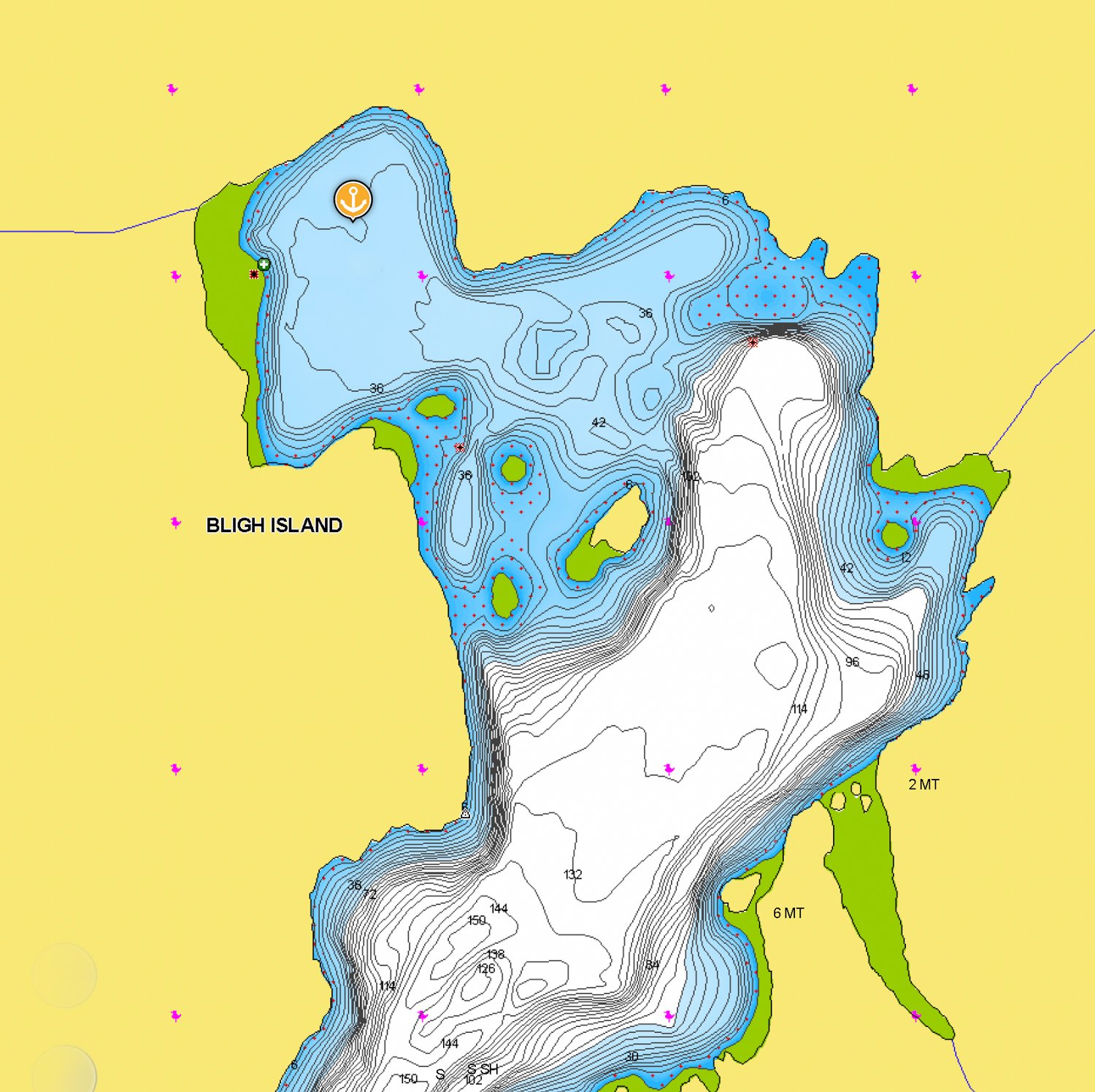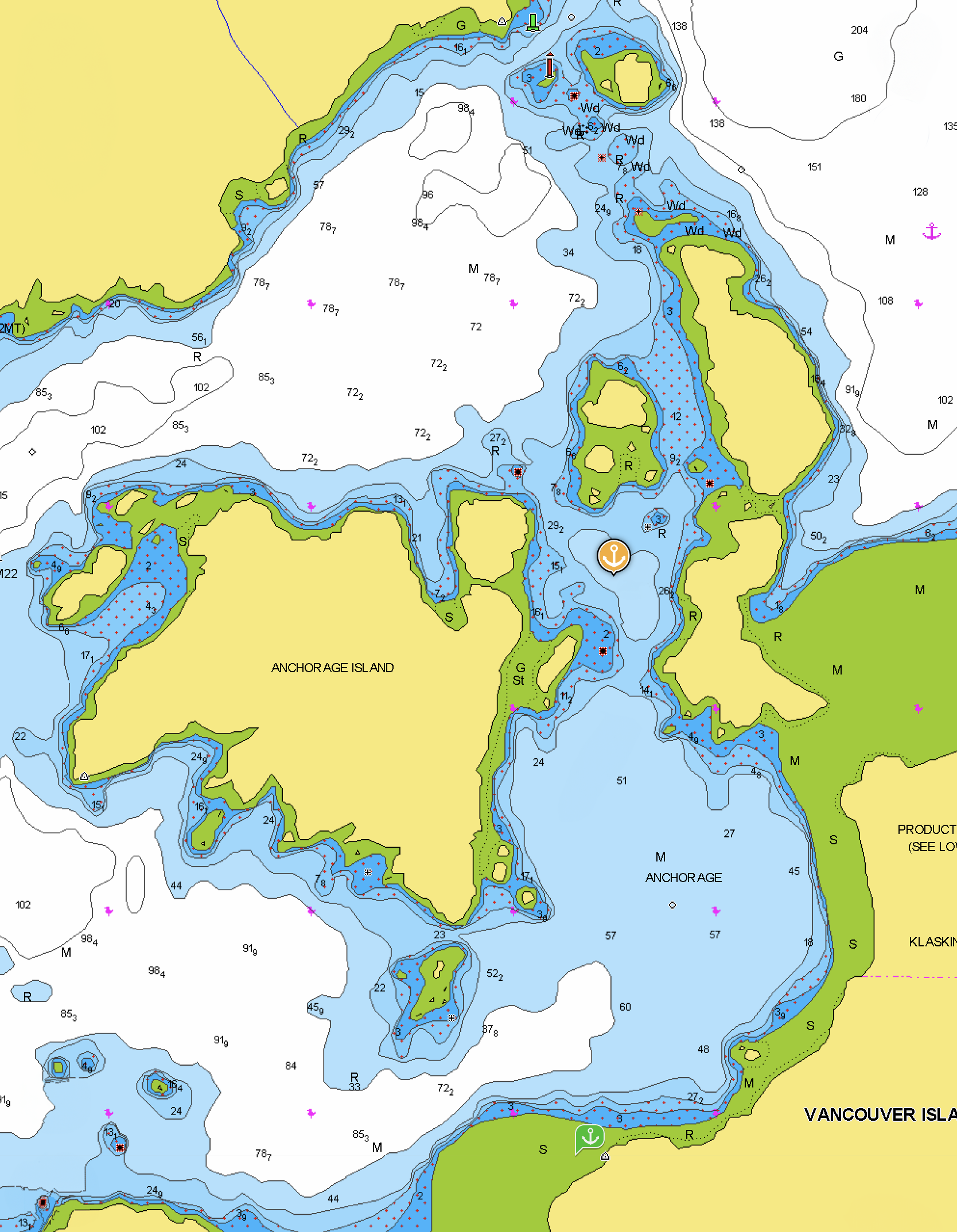Holmes Inlet Nook
/We lucked out today rounding Estavan Point and the Hesquiat Penninsula. Though not as intimidating as Cape Scott or the Brooks Peninsula, this is another place where winds and seas can be challenging. Once again, the Minkus weather dome held and we made the rounding in comfortable conditions. We also saw a sunfish, those are very weird-looking animals for sure.
Not being Hot Springs fans, we are always on the lookout for interesting places to anchor in and around Clayoquot Sound. Our friends on Navigator strongly recommended Holmes Inlet Nook, close to the head of Holmes Inlet off Sydney Inlet. A quick look at the chart reveals a few things. One, it’s a one way trip. The “Nook” is in a narrow offshoot of the main Holmes inlet, and there is no easy way to rejoin Holmes or Sydney inlet without retracing your steps. The second is that the turn into the inlet is more than 90 degrees, so situational awareness is critical.
HOLMES INLET COVE IS A ONE BOAT ANCHORAGE
We had following seas as we went up Sydney inlet and some winds. The seas died down as we entered the narrow offshoot, but the winds continued. As we lined up to make the turn into the entrance, the current was also working against us. Nevertheless, we entered safely and this one-boat nook (we did not stern tie) became home for the next two days.
On the charts, it looks like this anchorage might feel totally enclosed and confined, but you could see out enough to make it interesting.
CALM AND COZY
On day 2, we headed off in the dinghy to explore. First, we went up to the head of Holmes Inlet to Pretty Girl Cove. It was fairly attractive and a viable alternative to Holmes Nook, but the winds and fetch that day and the quickly shoaling depths would have made anchoring uncomfortable.
LOOKING OUT TO THE CHANNEL FROM INSIDE HOLMES INLET NOOK
THE VIEW FROM THE INET BACK INTO THE SMALL NOOK
We then decided to head south to Bottleneck Bay, a popular anchorage that we visited in 2012. The entry is narrow and interesting, and then it opens up to a large basin with multiple options for anchoring. We were totally shocked to find this bay empty. This has been a trend for us on this trip – we seem to be between “waves” of boaters who are heading south down the outside.
Thanks to the crew of M/V Navigator for the tip on this anchorage. We really enjoyed it.
























